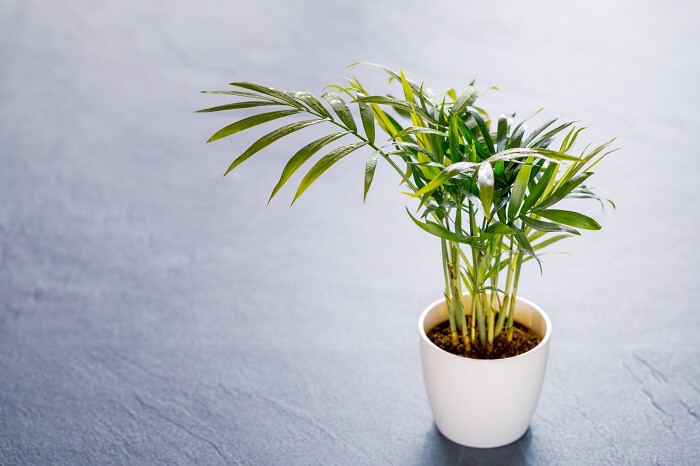Experts weigh-in on top tips for caring for the tropical plant.
The parlor palm, or Chamaedorea elegans, is an airy looking plant that brings a tropical feel to indoor spaces. Its low maintenance care needs make it a popular choice for homes and yards (weather permitting) everywhere. Here, experts discuss ways to welcome one into your space and ensure it prospers.

All About Parlor Palms
Bridget Zazzara, retail indoor and seasonal plant manager for Logan's Trading Company, says that the parlor palm is probably the easiest of all the palms to grow. You can identify it by its thick, dense, lush green palm, which is multiple stalked, unlike the single stalk of its relative the majesty palm. Even though this variety of palm is slow growing—Zazzara says it only grows a few inches per year—the lushness of the foliage makes it appear full all the way to the base.
How to Care for and Maintain Your Parlor Palm
"The parlor palm can grow indoors all year long, but I often advise our customers to put plants outside for the summer months," Zazzara says. "Tropical plants thrive and grow so much in the few months of being outside in the summer." You'll want to wait until the danger of frost has passed and bring it back inside before the first frost of winter, as tropical plants do not do well with cold weather. But before bringing it indoors, be sure to check it for any visible signs of insects first.
If you're keeping your palm inside year-round, it will survive in anything from bright, indirect light to low, natural light. Just stay away from grow lights. "The palm will not grow well in artificial light." And make sure it is getting enough moisture. "These plants require areas with high humidity," explains Vicky Popat, CFO and tropical plant expert at PlantOGram. "The trick to these plants [is] to make sure the soil remains moist to the touch but [is] well drained."
Fertilizer Needs
Even with its slow growth, your parlor palm could eventually reach between 12 and 15 feet in height. "Because the parlor palm is so slow growing I would advise repotting into only one size bigger than the pot it's currently in, every three or so years," she says, adding that like with any repotted houseplant, you should use an all-purpose fertilizer, like a liquid feed, once a month for three to four months, or a slow release all-purpose fertilizer added directly to the soil. Just don't forget to add more three months later. "During the winter season most houseplants sit dormant and fertilizing is not necessary."
Troubleshooting
Brown tips on a parlor palm could mean a lack of humidity. "It's best to not only water your palm (outside in the shade about once a week or inside about once every 10 to 14 days), but also mist the palm a few times a week year-round," Zazzara explains. "If one over waters the palm that could cause yellowing stems and leaves, sometimes brownish circular spots, and eventually root rot." On the other hand, not enough water will turn the palm's leaves yellow and they will curl.